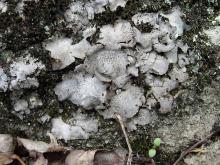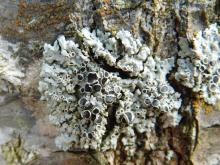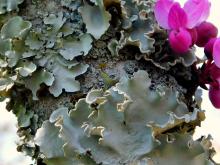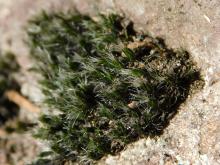Mosses, Liverworts, and Lichens
Media

Species Types
Scientific Name
Dermatocarpon spp.
Description
Stippleback lichens, or rock tripes, are almost always found on bluffs, boulders, and outcrops. They cling to their substrate by a single point of attachment and typically grow in clusters. The surface of these floppy-looking lichens is covered with tiny black dots.
Media

Species Types
Scientific Name
Physcia stellaris
Description
The star rosette lichen is a super common, small foliose lichen that most often grows on trees, including trunks, limbs, and twigs. The pale gray thallus has branching, petal-like lobes. The center of the rosette is almost always crowded with apothecia cups with black or dark gray centers.
Media

Species Types
Scientific Name
About 436 species in Missouri
Description
A lichen is a composite organism formed by certain fungus species that join with certain algae species. Lichens can be many colors and can be crusty, leaflike, flaky, branching, or mossy. They grow on rocks, trees, or other surfaces.
Media

Species Types
Scientific Name
Grimmia laevigata
Description
Silver beard moss grows on dry, exposed rocks and has a coarse texture. Each grayish-green leaf has a long, white, hairlike, slightly curved extension at the tip, giving this moss a silvery cast like a mink coat.
See Also
About Mosses, Liverworts, and Lichens in Missouri
Mosses, liverworts, hornworts, and lichens seem rather similar, but these organisms are in very different groups. Mosses, liverworts, and hornworts are small, low plants usually found in damp habitats. Unlike more familiar plants, they lack veinlike structures and do not produce flowers or seeds — instead, they produce spores. Meanwhile, lichens are not plants at all: they are a collection of different fungi that have photosynthetic algae living within their tissues.





















